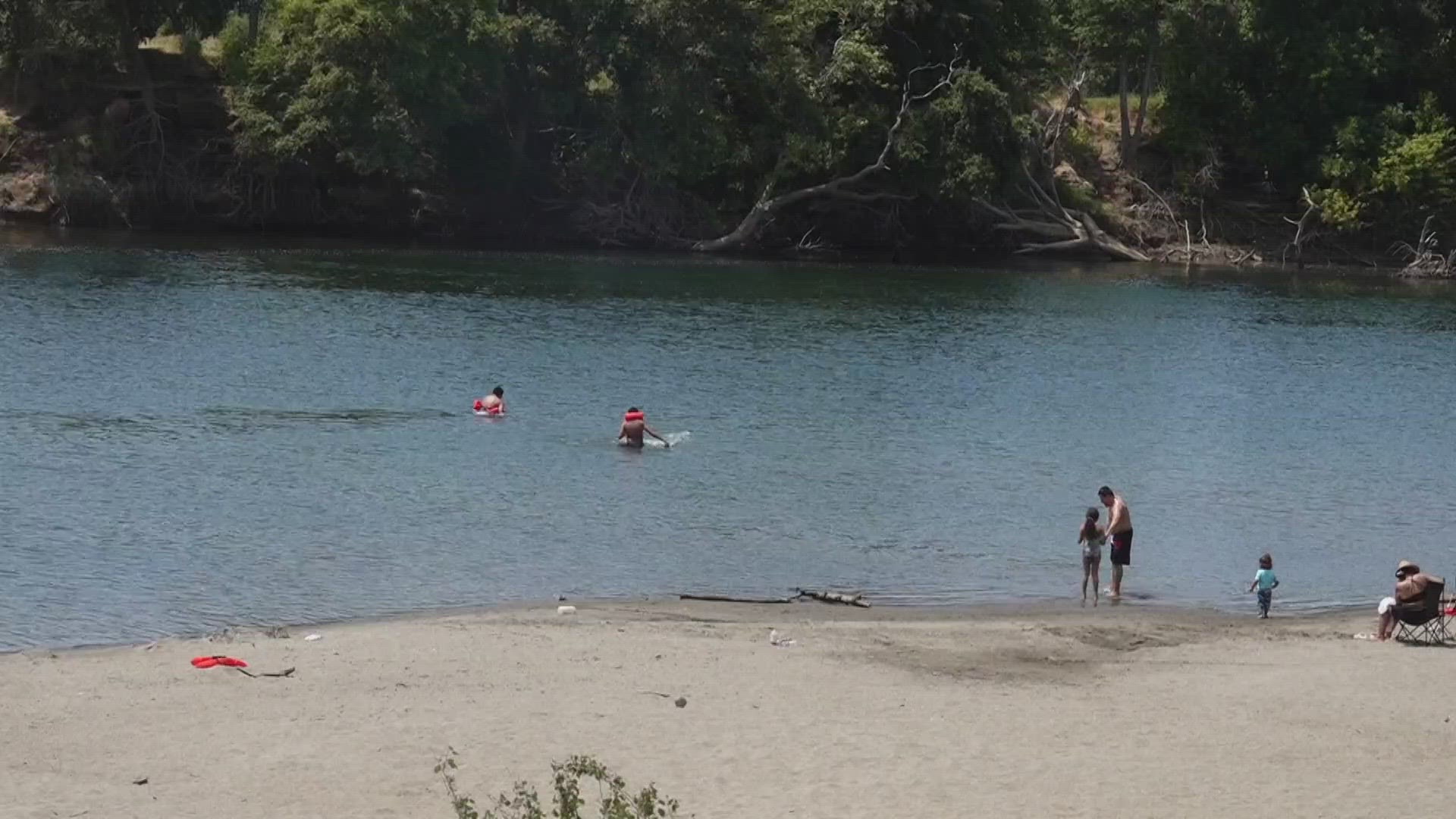SACRAMENTO, Calif. —
While flooding due to snowmelt has certainly done damage to many valley and foothill communities following the record winter, the cool weather pattern to start the year has prevented the widespread, catastrophic flooding that could have occurred under different circumstances.
California has spent the last few months mainly under the influence of low pressure systems. The systems have kept the region cool and allowed for a manageable snowmelt period. Sacramento so far has experienced one of its coolest Junes on record and is over three degrees below average.
Less than 20% of the Sierra snowpack remains, so the upcoming heatwave isn’t expected to majorly spike water levels in rivers and streams.
Not only has it been a cool spring and early summer, but it has also been unusually cloudy. Direct solar radiation is as much of a player in snowmelt as temperature is, so the cloudy skies paired with below average temperatures has been described as the “best case scenario” by the Department of Water Resources.
“The way this spring and summer has unfolded has been the best case scenario when it comes to temperatures and being a cooler spring and early summer so far, as well as the cloud cover, that helped to really kind of slow a lot of that snow melt so that we do get that slow, steady release rather than any big one day peak of snow melt,” said Sean de Guzman with the DWR.
Still, waterways have remained fast and extremely cold — a dangerous combination. Businesses like American River Raft Rentals located in Rancho Cordova had their operations impacted due to the high waters.
“This has been a crazy season with opening and closing due to high water and then raftable flows going back and forth, but now we are finally open for good with actually pretty average flows for the rest of the season,” said Kent Hansen, co-owner of American River Raft Rentals.
The rafting service was closed from Mother’s Day until recently when flows finally dipped below 8,000 cubic feet per second (CFS), their threshold for shutting down operations due to the inherent dangers involved with fast flowing, cold rivers.
The slower than expected, steady melt has created favorable conditions now that the peak of snowmelt has passed.
“We expected the forecast for 4,500 CFS to not happen until July, but we're below 4,000 CFS already, which is an average flow this time of the year with looking back historically. Obviously the last couple years were a drought,” said Hansen.
An average flowing river this time of year is still a very dangerous place to be, especially as the holiday weekend nears.
“Always wear your lifejacket, even on the banks. That's where a lot of things could go wrong,” said Hansen.
By the end of the summer, Hansen expects flow to be around 2,000 CFS. Just two years ago, flows dropped to as low as 500 CFS.



















